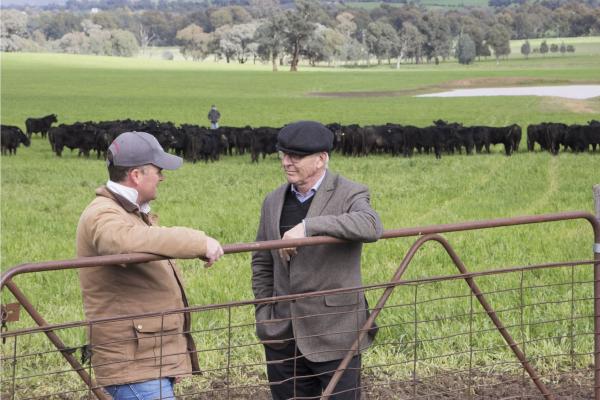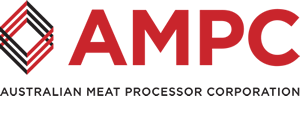
Securing a viable future for a vital Australian industry
Australia’s $23 billion red meat industry is at risk from fierce international competition and changing consumer tastes according to a sustainability report published by the Australian Meat Processor Corporation which aims to proactively address the challenges through a unified, whole-of-industry approach.
The report entitled ‘A Feast of Ideas’ defines six material risks based on research conducted by Ernst & Young on Australian and international red meat industries as well as a comprehensive stakeholder survey.
The risks include a challenging global competitive environment, changing consumption patterns that are leading to a decline in the domestic demand for red meat, a fragmented supply chain, an increasing consumer focus on food safety and quality, environmental protection and animal welfare, a complex regulatory environment and climate change.
Peter Noble, Chairman of the Australian Meat Processor Corporation (AMPC), said that taking no action to these risks was not an option.
“This report puts these issues out on the table and aims to start a conversation with all the participants in the red meat industry’s supply chain as to the best way to understand and respond to them,” he said.
“When you look at our value chain, processors are in a unique position because they have touch points with all participants in the supply chain – from livestock producers through to the customers in the international markets where 74% our produce is consumed.”
“It is from this unique position that AMPC has assessed the risks and begun to actively implement specific projects. The projects are aimed at overcoming vulnerabilities faced by the supply chain and enable Australia to build a more sustainable and viable red meat industry,” Mr Noble said.
International Competition
While Australia currently exports more than its peers on a relative basis, the industry faces substantial competitive pressures both domestically and internationally. Domestically, the sector competes with exporters of live animals. Internationally, it competes primarily with Brazil, the US and India for export markets. It is estimated that this competition will increase over the next five years, largely because of cost disadvantages.
To counter the challenges posed by international competition, we are making significant investments to improve the industry's cost structure and leading the way in evaluating and developing innovations and technologies. For example, we are designing a prototype six-axis robot to pick individual primal cuts from a conveyor and place them in cartons. In real time, the robot will be able to identify information such as primal cut type, position, and orientation.
Changing Consumption Patterns
With an increased focus on “healthy” and “humane” consumption and greater demand for convenience foods, eating patterns in developed nations are undergoing substantial change. During the past three decades, consumers have turned away from red meat, opting rather for chicken and pork.
The AMPC is undertaking research to develop products to suit the demand requirements of the ageing population. They are also investigating how to provide consumers with clear and consistent branding that clarifies how the meat was raised and processed and exploring new and innovative ways to develop value-added products.
Value Chain Integration
Australia’s red meat sector operates at a competitive disadvantage to those other red meat industries with greater levels of integration. Not only does greater integration reduce economic costs in the sector, it also allows for more sharing of information, better economies of scale, effective marketing and an ability to respond to customer demands.
To demonstrate the benefit of collaboration and to facilitate discussions and build trust between producers and processors AMPC is funding research to investigate options for a coordinated supply chain information system.
Regulatory Environment
The industry’s value chain is highly fragmented. As a result, it is not well positioned to respond to an increasingly uncertain regulatory environment where changes can occur rapidly, and without industry consultation. Ensuring effective advocacy to avoid unnecessary and burdensome regulation typically requires a high degree of alignment.
The AMPC is undertaking research to investigate options to reduce regulatory duplication and improve effectiveness and working with regulators to build awareness of industry practices and systems.
Social Licence to Operate
The Australian red meat industry’s social licence to operate is derived from the regional communities in which it operates. The confluence of factors around animal welfare, environmental impact and healthy diets will continue to place the industry’s social licence to operate under a higher degree of uncertainty.
AMPC is currently undertaking research into more sustainable practices, such as reducing water, energy usage and the release of effluent at our processing facilities and increasing advocacy and research into the industry’s social impact. This research will play a vital role in securing the industry’s future, ensuring sufficient labour is available, confirming its social licence to operate, and cementing its place in the economy and the agricultural sector as a vital, healthy, attractive and sustainable industry.
Climate Change
Australia is facing a changing natural environment with increasing incidences of "extreme" weather events and changing weather patterns that directly impact the industry. The increasing rate and severity of "extreme" climatic events may pose ongoing and regular disruptions to Australian production.
AMPC is working to raise awareness of Australia’s changing climate in the red meat processing sector, investing in research that seeks to understand critical vulnerabilities in the value chain and investigating technology, infrastructure options and mitigation techniques to minimise the industry’s impact on the environment.
For example, AMPC is collaborating with the CSIRO to test the introduction of seaweed into cattle feed. The CSIRO found that when introducing seaweed into the feed – instead of becoming methane, carbon in the gut becomes available for producing other types of energy molecules more useful to cattle for their growth. It can almost eliminate methane emissions from the digestive processes of beef cattle.
The full sustainability report ‘A Feast of Ideas’ and further information on these initiatives is available on our sustainability microsite: http://feastofideas.com/
The Australian Meat Processor Corporation hosted a webinar on Friday 28th October 2016 with AMPC Chairman Peter Noble and Ernst and Young’s Peter Dyett. They explored the six material risks facing the red meat industry. The webinar can now be viewed here.



